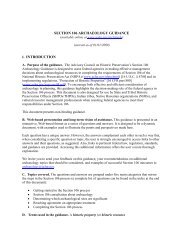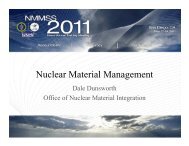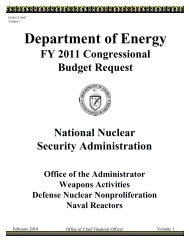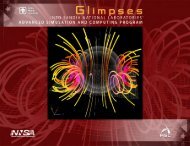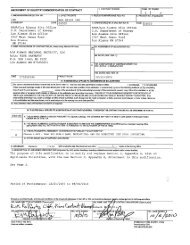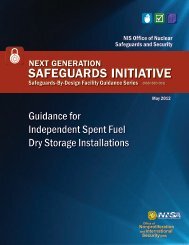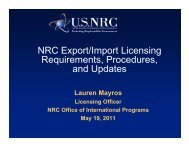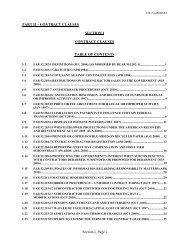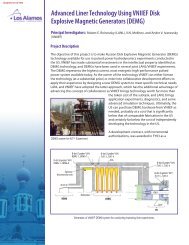ASC Code Strategy - National Nuclear Security Administration
ASC Code Strategy - National Nuclear Security Administration
ASC Code Strategy - National Nuclear Security Administration
You also want an ePaper? Increase the reach of your titles
YUMPU automatically turns print PDFs into web optimized ePapers that Google loves.
Figure 1. <strong>ASC</strong> <strong>National</strong> Simulation Portfolio for Stockpile Certification<br />
Thus, to provide the core simulation capabilities for the national portfolio, we have identified six key application areas<br />
that require distinct simulation capabilities. The first two areas, weapons nuclear performance assessment and nonnuclear<br />
system assessment, are the broadest areas in terms of multiphysics complexity and scenario complexity. The<br />
other four application areas, NEP safety, HEDP, radiation effects for electrical systems, and diagnostics, are somewhat<br />
more focused than the first two areas in terms of the ranges of physics and scenarios considered, and thus are termed<br />
in the national portfolio as integrated capabilities for specific applications. Finally, in the area of nuclear performance<br />
assessment, to meet the need for peer review in assessments, we have identified the need to develop and maintain two<br />
independent national capabilities for nuclear performance assessment. In the following subsections, we provide a more<br />
detailed explanation of the simulation capabilities for each of the six application areas, and how those capabilities are to<br />
be used in a national tri-lab context.<br />
One important aspect to note is that while each of these portfolio capabilities is being developed for the national<br />
program and for use at all three national defense laboratories, clear and focused responsibility is necessary within the<br />
program to manage requirements, work efforts, and expectations. Therefore, each capability has a lead laboratory that<br />
is responsible to the national program for the capability. This does not mean that the lead laboratory will necessarily<br />
be the only contributor to that capability, but rather that the laboratory is responsible for engaging with the federal<br />
managers and leads from the other laboratories to develop plans, execute the national effort towards the capability, and<br />
work to eliminate duplication of effort in the capability area. It is assumed that lab-to-lab agreements on issues such as<br />
co-development and user support would be negotiated in many cases to ensure that needs of the tri-lab stakeholders can<br />
be met. This issue is discussed later in this section.<br />
The following subsections describe each of the capabilities in the national portfolio, including a high-level technical<br />
description of the capability, its role and importance to stockpile stewardship, and issues concerning the transition from<br />
the current state of national capabilities to the future, portfolio-based state for that application.<br />
<strong>Nuclear</strong> Performance Systems<br />
The role of the nuclear performance code systems is to predict the performance of the NEP of nuclear weapons. All<br />
that can be described of the physics modeled in nuclear weapons codes in an unclassified setting is that it may include<br />
hydrodynamics, radiation transport, fission, thermonuclear burn, high-explosives burn, and instabilities and mix.<br />
Modeling the interaction of these physics, with the fidelity to be predictive, places an enormous challenge on algorithm<br />
9



